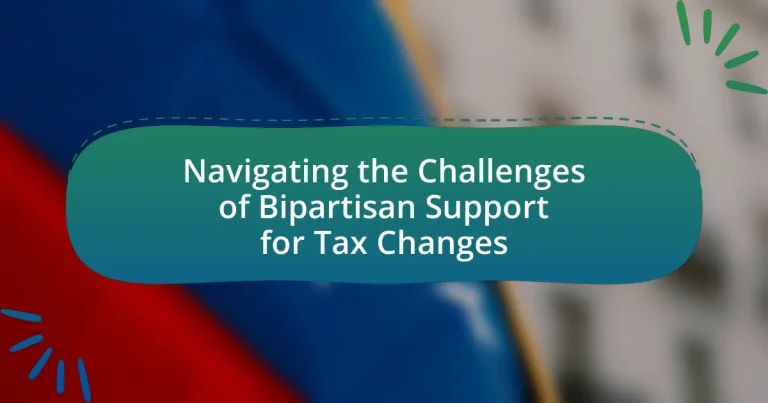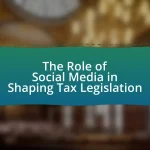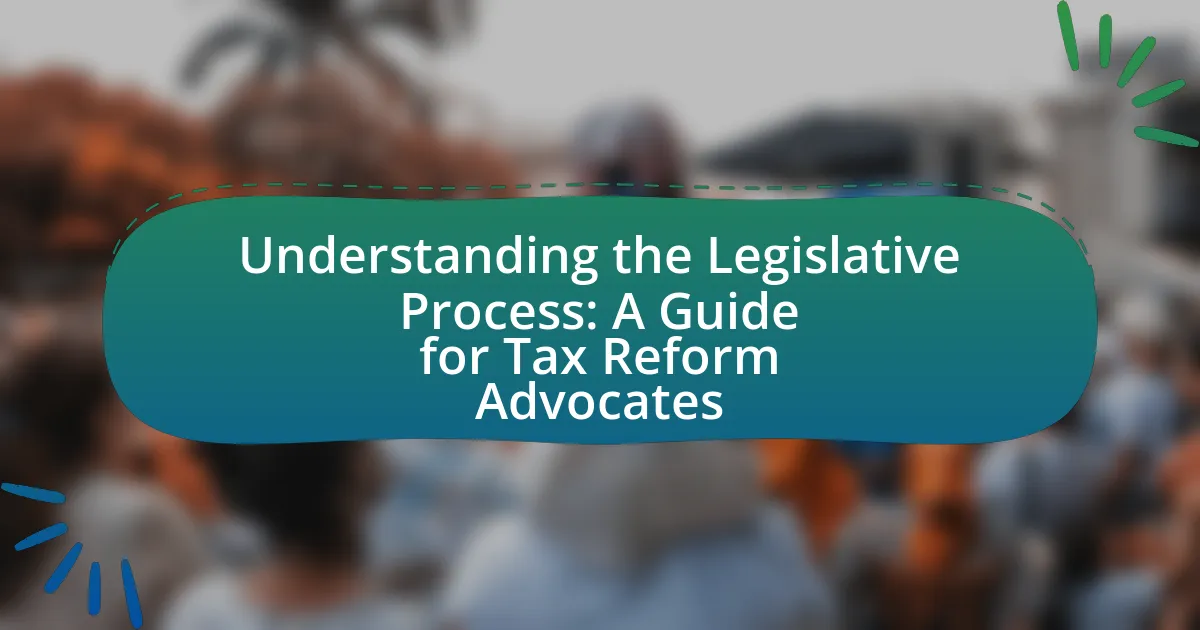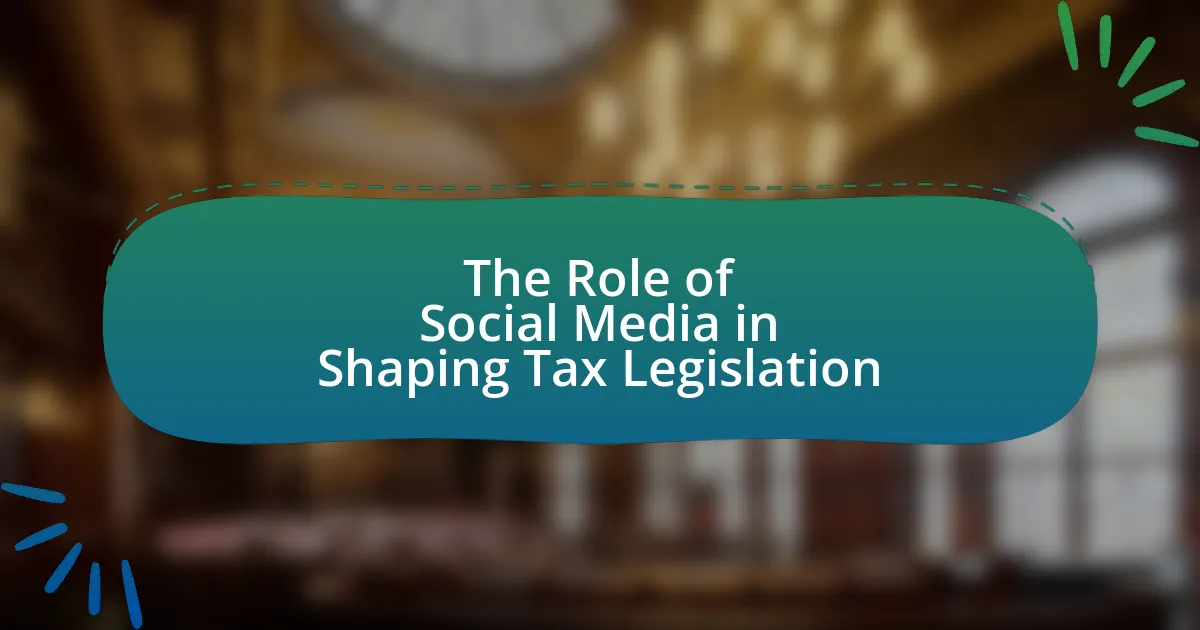The article focuses on the challenges of achieving bipartisan support for tax changes, highlighting ideological differences, political polarization, and competing economic priorities as significant obstacles. It emphasizes the importance of bipartisan support for tax reform, citing historical examples like the Tax Reform Act of 1986 and the American Taxpayer Relief Act of 2012, which illustrate how collaboration can lead to effective and lasting tax policies. The article also discusses the role of public opinion, media influence, and interest groups in shaping tax policy debates, while offering strategies for fostering bipartisan cooperation and engagement among stakeholders. Ultimately, it underscores the potential economic benefits and increased public trust that can result from successful bipartisan tax reforms.
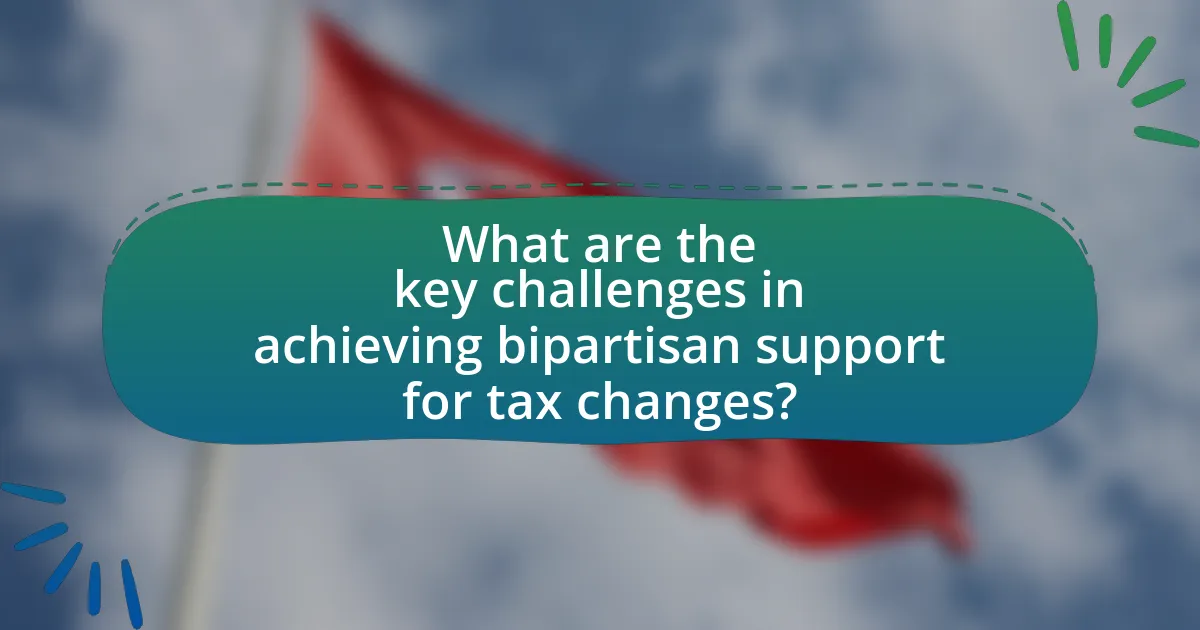
What are the key challenges in achieving bipartisan support for tax changes?
The key challenges in achieving bipartisan support for tax changes include ideological differences, political polarization, and competing economic priorities. Ideological differences arise as Democrats and Republicans often have fundamentally opposing views on taxation, with Democrats typically favoring progressive tax structures and Republicans advocating for lower taxes and reduced government spending. Political polarization has intensified in recent years, making it difficult for lawmakers to find common ground, as evidenced by the increasing number of party-line votes in Congress. Additionally, competing economic priorities, such as addressing national debt versus funding social programs, create further obstacles to consensus on tax reform. These factors collectively hinder the ability to reach bipartisan agreements on tax legislation.
Why is bipartisan support crucial for tax reform?
Bipartisan support is crucial for tax reform because it ensures broader acceptance and sustainability of the changes implemented. When both major political parties endorse tax reforms, it increases the likelihood of the legislation passing through Congress and being enacted into law. Historical examples, such as the Tax Reform Act of 1986, demonstrate that bipartisan efforts can lead to significant and lasting changes in tax policy, as they reduce the chances of future repeal or modification by subsequent administrations. Additionally, bipartisan support fosters public trust and confidence in the tax system, as citizens perceive the reforms as balanced and fair, addressing the needs of diverse stakeholders.
What historical examples illustrate the importance of bipartisan support in tax legislation?
The Tax Reform Act of 1986 is a historical example that illustrates the importance of bipartisan support in tax legislation. This act, which was signed into law by President Ronald Reagan, received overwhelming bipartisan backing, passing the Senate with a vote of 97-3 and the House with a vote of 292-136. The collaboration between Republicans and Democrats allowed for significant changes, including lowering tax rates and broadening the tax base, which ultimately contributed to economic growth in the following years. Another example is the American Taxpayer Relief Act of 2012, which aimed to avert the fiscal cliff and was supported by both parties, passing with a vote of 257-167 in the House and 89-8 in the Senate. This bipartisan effort was crucial in addressing urgent fiscal challenges and maintaining economic stability.
How does bipartisan support impact the effectiveness of tax changes?
Bipartisan support significantly enhances the effectiveness of tax changes by fostering broader acceptance and implementation across political divides. When both major political parties endorse tax reforms, it increases the likelihood of stable and lasting policy changes, as evidenced by the Tax Reform Act of 1986, which received bipartisan backing and resulted in a comprehensive overhaul of the tax code that has endured for decades. This collaborative approach not only facilitates smoother legislative processes but also builds public trust and compliance, ultimately leading to more effective tax policies that can stimulate economic growth and improve revenue generation.
What factors contribute to the difficulty of gaining bipartisan support?
The difficulty of gaining bipartisan support is primarily influenced by ideological polarization, differing party priorities, and the influence of special interest groups. Ideological polarization has increased in recent years, leading to stark contrasts in policy preferences between parties, which complicates consensus-building. Additionally, differing party priorities often result in conflicting agendas, making it challenging to find common ground on tax changes. Special interest groups further complicate the landscape by lobbying for specific interests that may not align with bipartisan objectives, thereby creating additional barriers to collaboration.
How do political ideologies influence tax policy negotiations?
Political ideologies significantly influence tax policy negotiations by shaping the priorities and values of the negotiating parties. For instance, conservative ideologies typically advocate for lower taxes and reduced government spending, emphasizing individual responsibility and free-market principles. In contrast, liberal ideologies often support higher taxes on wealthier individuals to fund social programs, reflecting a belief in collective responsibility and social equity.
These ideological differences manifest in negotiations, where conservatives may resist tax increases or advocate for tax cuts, while liberals may push for progressive tax structures. Historical examples include the Tax Reform Act of 1986, which showcased bipartisan cooperation but was influenced by the prevailing conservative ideology favoring tax simplification and reduction. Thus, the ideological framework of the negotiating parties directly impacts the outcomes and compromises reached in tax policy discussions.
What role do interest groups play in shaping bipartisan tax discussions?
Interest groups significantly influence bipartisan tax discussions by advocating for specific policies that align with their interests. These groups, which include business associations, labor unions, and advocacy organizations, mobilize resources to lobby lawmakers, provide research and data to support their positions, and engage in public campaigns to shape public opinion. For instance, the National Federation of Independent Business has historically lobbied for tax reforms that favor small businesses, impacting legislative priorities and negotiations. Their ability to present compelling arguments and data can sway legislators from both parties, facilitating compromises that lead to bipartisan support for tax legislation.
What strategies can be employed to foster bipartisan cooperation on tax changes?
To foster bipartisan cooperation on tax changes, establishing common ground through inclusive dialogue is essential. Engaging stakeholders from both parties in discussions that prioritize shared goals, such as economic growth and fairness, can create a collaborative environment. Historical examples, such as the Tax Reform Act of 1986, demonstrate that bipartisan efforts can succeed when both sides negotiate compromises that address the concerns of their constituents. Additionally, utilizing data-driven analysis to highlight the potential benefits of proposed tax changes can further align interests and build trust among lawmakers.
How can compromise be achieved in tax policy discussions?
Compromise in tax policy discussions can be achieved through collaborative negotiation and stakeholder engagement. Engaging diverse stakeholders, including policymakers, business leaders, and community representatives, fosters a comprehensive understanding of varying perspectives and needs. Historical examples, such as the Tax Reform Act of 1986, demonstrate that bipartisan support can be garnered when parties prioritize common goals, such as economic growth and fairness, over partisan interests. Additionally, utilizing data-driven analysis to present the potential impacts of proposed tax changes can help build consensus by addressing concerns with factual evidence.
What communication techniques can enhance bipartisan dialogue?
Active listening, empathy, and framing issues collaboratively are communication techniques that can enhance bipartisan dialogue. Active listening ensures that all parties feel heard and understood, fostering a respectful environment. Empathy allows participants to appreciate differing perspectives, which can reduce hostility and promote cooperation. Collaborative framing of issues encourages finding common ground, focusing on shared goals rather than partisan divides. Research indicates that these techniques can lead to more productive discussions and better outcomes in negotiations, as seen in various bipartisan initiatives where mutual understanding was prioritized.
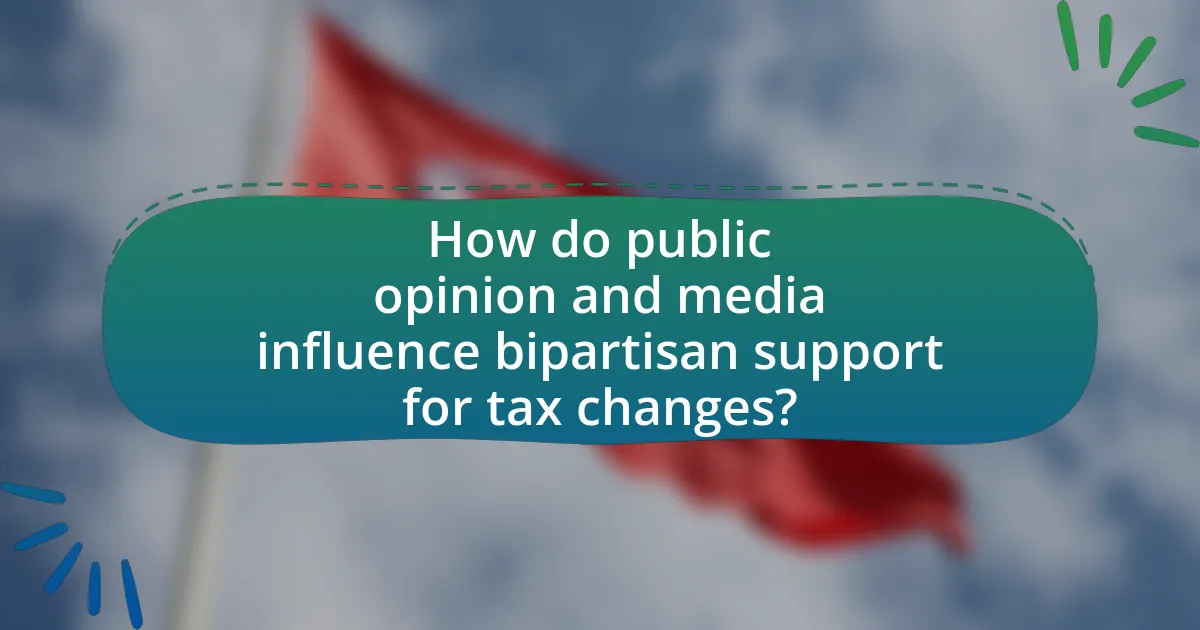
How do public opinion and media influence bipartisan support for tax changes?
Public opinion and media significantly influence bipartisan support for tax changes by shaping perceptions and priorities among lawmakers and constituents. When public sentiment leans towards favoring specific tax reforms, legislators from both parties are more likely to collaborate to align with voter preferences, as seen in instances like the Tax Cuts and Jobs Act of 2017, where public support for tax cuts influenced bipartisan negotiations. Additionally, media coverage can amplify certain narratives, framing tax changes as beneficial or detrimental, which can sway public opinion and, consequently, legislative action. For example, studies have shown that positive media portrayals of tax reforms can lead to increased public support, prompting bipartisan efforts to enact those changes.
What role does public opinion play in shaping tax policy debates?
Public opinion significantly influences tax policy debates by shaping policymakers’ perceptions of public preferences and priorities. When a majority of citizens express support for specific tax reforms, such as increasing taxes on the wealthy or reducing corporate tax rates, elected officials often feel compelled to align their proposals with these sentiments to secure voter approval and maintain electoral support. For instance, surveys conducted by organizations like Gallup and Pew Research Center consistently show that public attitudes toward taxation can sway legislative agendas, as seen in the debates surrounding the Tax Cuts and Jobs Act of 2017, where public opinion on tax fairness played a crucial role in the discussions.
How can lawmakers gauge public sentiment on tax issues?
Lawmakers can gauge public sentiment on tax issues through surveys, public forums, and social media analysis. Surveys provide quantitative data on constituents’ opinions, while public forums allow for direct interaction and feedback. Social media analysis offers insights into trending sentiments and concerns regarding tax policies. For instance, a 2021 Pew Research Center study indicated that 61% of Americans support increasing taxes on the wealthy, highlighting a significant public sentiment that lawmakers can consider when proposing tax changes.
What impact does media coverage have on bipartisan tax negotiations?
Media coverage significantly influences bipartisan tax negotiations by shaping public perception and political pressure. When media outlets highlight specific tax proposals or negotiations, they can sway public opinion, which in turn affects lawmakers’ decisions. For instance, extensive coverage of tax reform discussions can lead to increased public scrutiny, prompting legislators to either support or oppose measures based on constituents’ reactions. Studies have shown that media framing can impact the perceived legitimacy of tax policies, as seen in the 2017 Tax Cuts and Jobs Act, where media narratives played a crucial role in shaping the debate and influencing bipartisan support.
How can social media be leveraged to build bipartisan support?
Social media can be leveraged to build bipartisan support by facilitating dialogue and collaboration between diverse political groups. Platforms like Twitter and Facebook allow for the sharing of information, enabling users from different political backgrounds to engage in discussions about tax changes and their implications. For instance, bipartisan campaigns that highlight shared values, such as economic growth or community welfare, can gain traction on social media, fostering a sense of unity. Research indicates that social media campaigns that emphasize common goals can increase engagement across party lines, as seen in various advocacy efforts where cross-party coalitions successfully mobilized support for policy changes.
What strategies can be used to engage constituents on tax issues through social media?
To engage constituents on tax issues through social media, utilize targeted messaging, interactive content, and community engagement strategies. Targeted messaging involves crafting specific posts that address the unique concerns and interests of different demographic groups, ensuring relevance and resonance. Interactive content, such as polls, quizzes, and live Q&A sessions, encourages participation and fosters a sense of community among constituents. Community engagement strategies, including sharing success stories and highlighting local impacts of tax policies, can create a personal connection and motivate constituents to engage further. These approaches are supported by studies showing that personalized communication and interactive formats significantly increase engagement rates on social media platforms.
How can social media campaigns promote understanding of tax changes across party lines?
Social media campaigns can promote understanding of tax changes across party lines by disseminating clear, factual information that highlights the implications of those changes for diverse demographics. These campaigns can utilize targeted messaging to address specific concerns of different political groups, ensuring that the content resonates with a broad audience. For instance, studies have shown that social media platforms can effectively reach users with tailored content that simplifies complex tax information, making it more accessible. Additionally, engaging visuals and infographics can illustrate the benefits or drawbacks of tax changes, fostering dialogue and reducing misinformation. By encouraging discussions and sharing personal stories related to tax impacts, social media campaigns can bridge ideological divides and enhance mutual understanding among constituents.
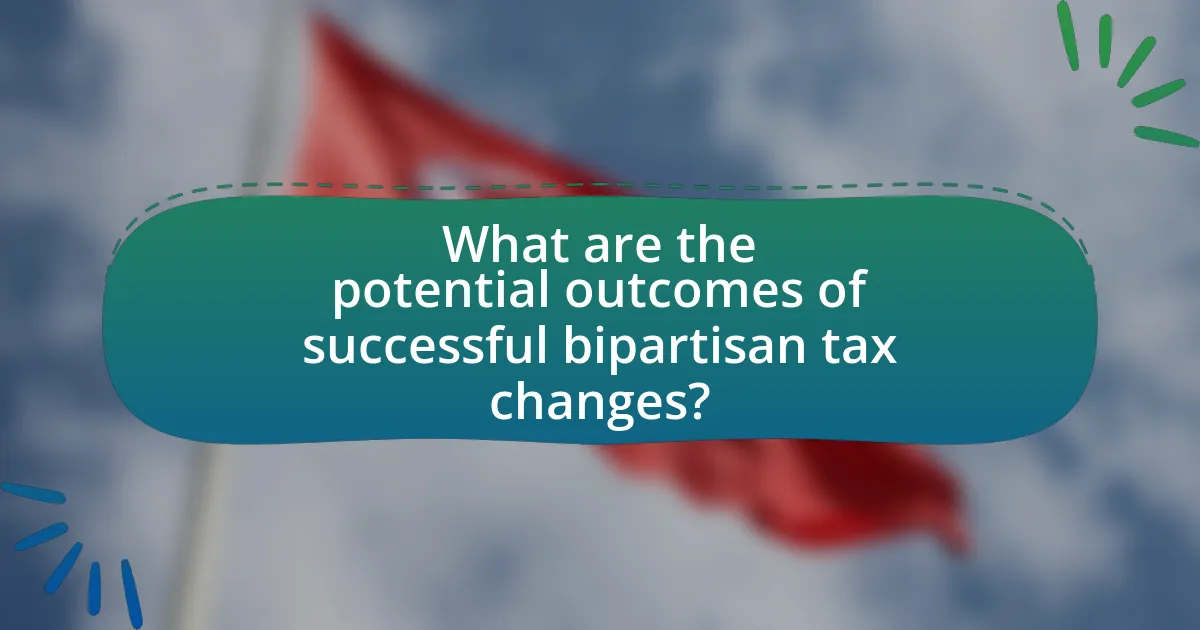
What are the potential outcomes of successful bipartisan tax changes?
Successful bipartisan tax changes can lead to increased economic stability and growth. When both major political parties collaborate on tax reforms, it often results in policies that are more widely accepted, reducing uncertainty for businesses and consumers. For instance, bipartisan tax legislation can simplify the tax code, making compliance easier and potentially increasing tax revenue. Historical examples, such as the Tax Reform Act of 1986, demonstrate that bipartisan efforts can lead to significant reductions in tax rates while broadening the tax base, ultimately fostering a more favorable economic environment. Additionally, successful bipartisan tax changes can enhance public trust in government, as they reflect a commitment to cooperation and effective governance.
How can bipartisan tax reforms benefit the economy?
Bipartisan tax reforms can benefit the economy by creating a stable and predictable tax environment that encourages investment and economic growth. When both major political parties collaborate on tax policy, it reduces uncertainty for businesses and individuals, leading to increased consumer spending and business expansion. Historical data shows that bipartisan tax reforms, such as the Tax Reform Act of 1986, resulted in significant economic growth, with GDP growth averaging around 4.5% in the years following its implementation. This collaborative approach can also enhance public trust in government, further stimulating economic activity as citizens feel more confident in their financial decisions.
What specific economic indicators improve with bipartisan tax legislation?
Bipartisan tax legislation typically improves several specific economic indicators, including GDP growth, employment rates, and consumer spending. For instance, studies have shown that tax cuts can lead to increased disposable income, which in turn boosts consumer spending; the Tax Policy Center reported that tax reforms can raise GDP by up to 1.5% over a decade. Additionally, bipartisan support often leads to more stable fiscal policies, which can enhance business investment and job creation, as evidenced by historical data from the Congressional Budget Office indicating that tax reforms can lead to a significant increase in employment rates.
How do bipartisan tax changes affect public trust in government?
Bipartisan tax changes generally enhance public trust in government by demonstrating cooperation and compromise among political parties. When lawmakers from different parties work together on tax reforms, it signals to the public that the government is capable of addressing complex issues collaboratively, which can lead to increased confidence in its effectiveness. Research indicates that public perception of government efficacy improves when bipartisan efforts are visible, as seen in the 2017 Tax Cuts and Jobs Act, where bipartisan support for certain provisions was linked to a temporary rise in trust levels among constituents.
What lessons can be learned from past bipartisan tax reforms?
Past bipartisan tax reforms demonstrate that successful collaboration requires clear communication and compromise. For instance, the Tax Reform Act of 1986, which was supported by both parties, highlighted the importance of simplifying the tax code while broadening the tax base. This reform resulted in a reduction of tax rates and an increase in revenue, proving that bipartisan efforts can lead to effective economic outcomes. Additionally, the necessity of addressing the concerns of various stakeholders, including businesses and individual taxpayers, was evident in the 2017 Tax Cuts and Jobs Act, which aimed to stimulate growth while facing opposition. These examples underscore that bipartisan tax reforms thrive when there is a shared vision and willingness to negotiate, ultimately leading to more sustainable and widely accepted tax policies.
What successful bipartisan tax reforms have been implemented in recent history?
The Tax Cuts and Jobs Act of 2017 is a notable bipartisan tax reform implemented in recent history. This legislation, which passed with support from both Republicans and some Democrats, significantly lowered the corporate tax rate from 35% to 21% and aimed to stimulate economic growth. Additionally, the American Recovery and Reinvestment Act of 2009, which included tax cuts and incentives to promote job creation, received bipartisan support during the economic crisis. These reforms demonstrate the potential for collaboration across party lines to address economic challenges through tax policy.
How can these lessons inform future tax policy efforts?
Lessons from past bipartisan tax policy efforts can inform future tax policy by highlighting the importance of compromise and stakeholder engagement. Historical examples, such as the Tax Reform Act of 1986, demonstrate that successful tax reforms often result from collaborative negotiations that consider diverse interests. Additionally, data from the Congressional Budget Office indicates that tax policies which incorporate feedback from both parties tend to have greater public acceptance and longevity. This suggests that future tax policy efforts should prioritize inclusive dialogue and flexible approaches to accommodate varying perspectives, ultimately leading to more sustainable and effective tax legislation.
What best practices can lawmakers adopt to navigate bipartisan tax challenges?
Lawmakers can adopt several best practices to navigate bipartisan tax challenges, including fostering open dialogue, prioritizing transparency, and utilizing data-driven decision-making. Open dialogue encourages collaboration between parties, allowing lawmakers to understand differing perspectives and find common ground. Prioritizing transparency in tax proposals builds trust among constituents and legislators, facilitating smoother negotiations. Utilizing data-driven decision-making ensures that tax policies are based on empirical evidence, which can help mitigate partisan disagreements by focusing discussions on objective outcomes rather than ideological beliefs. These practices have been shown to enhance bipartisan cooperation, as evidenced by successful tax reforms in various states where lawmakers engaged in collaborative processes.
How can transparency in negotiations enhance bipartisan support?
Transparency in negotiations enhances bipartisan support by fostering trust and reducing misunderstandings between parties. When both sides are aware of each other’s positions, intentions, and constraints, it creates an environment conducive to collaboration. For instance, a study by the Brookings Institution found that transparent communication during negotiations leads to higher levels of satisfaction and agreement among participants, as it allows for the identification of common ground and shared goals. This clarity can mitigate partisan tensions, making it easier to reach compromises on complex issues like tax changes.
What role does stakeholder engagement play in successful tax reform?
Stakeholder engagement is crucial for successful tax reform as it fosters collaboration and builds consensus among diverse groups. Engaging stakeholders, including businesses, community organizations, and policymakers, ensures that various perspectives are considered, leading to more equitable and effective tax policies. For instance, the 2017 Tax Cuts and Jobs Act in the United States involved extensive consultations with stakeholders, which helped address concerns and facilitated bipartisan support. This collaborative approach not only enhances the legitimacy of the reform but also increases the likelihood of successful implementation and compliance.
